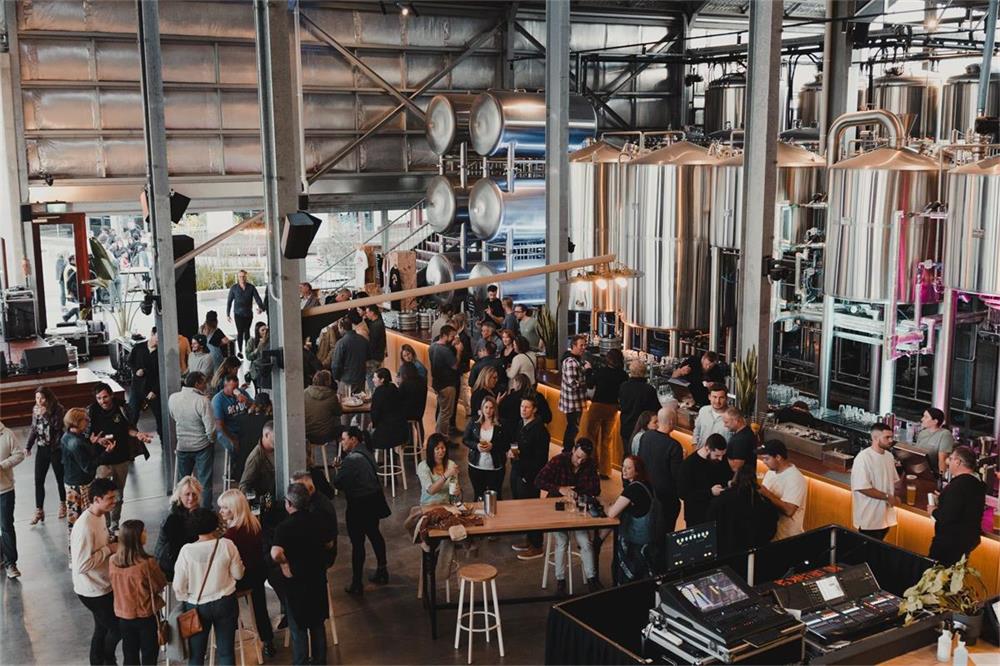A Deep Dive into Commercial Beer Brewing Equipment
Introduction
In the dynamic world of brewing, where creativity meets precision, commercial beer brewing equipment plays a pivotal role in crafting the perfect pint. This article delves into the realm of beer brewing equipment designed for commercial settings, shedding light on its significance, components, selection criteria, maintenance, and emerging trends.
Understanding Commercial Beer Brewing Equipment
Commercial beer brewing equipment forms the backbone of any brewery operation. It encompasses a range of specialized machinery and vessels that facilitate the entire brewing process, from converting raw ingredients into wort to packaging the final product. This equipment ensures consistency, efficiency, and quality, factors that are crucial for success in the competitive brewing industry.

Benefits of High-Quality Brewing Equipment
Investing in high-quality brewing equipment offers several advantages. Notably, it ensures precise control over various brewing parameters, resulting in consistent and reproducible brews. Quality equipment also enhances the overall brewing experience, reduces downtime due to maintenance issues, and contributes to the production of better-tasting beer.
Key Components of Commercial Brewing Equipment
Overview of Mash Tun and Brew Kettle
The mash tun and brew kettle are fundamental components of brewing equipment. The mash tun facilitates the mashing process, where enzymes convert starches in grains into fermentable sugars. The brew kettle, on the other hand, is where the wort is boiled, hops are added, and flavors are developed.
Importance of Fermentation Tanks
Fermentation tanks are where the magic happens. Yeast converts sugars into alcohol and carbon dioxide, producing the desired flavor and aroma profiles. Properly designed tanks are essential to control temperature, pressure, and other variables that influence fermentation.
Role of Heat Exchangers
Heat exchangers are crucial for rapidly cooling the boiled wort before it enters the fermentation phase. This not only locks in flavors but also prevents contamination. Modern heat exchangers enhance energy efficiency, making them an essential part of the equipment lineup.
Packaging and Dispensing Equipment
Packaging and dispensing equipment ensure that the final product reaches consumers in optimal condition. This includes bottling, canning, kegging, and draft systems. The right equipment minimizes oxygen exposure, maintains carbonation, and extends shelf life.
Factors to Consider When Choosing Brewing Equipment
Capacity and Scale
The capacity of brewing equipment should align with production goals. Scaling up requires larger vessels and more advanced systems to meet demand without compromising quality.
Material and Build Quality
Stainless steel is the preferred material due to its durability, corrosion resistance, and ease of cleaning. A well-built system minimizes maintenance requirements and extends the equipment’s lifespan.
Efficiency and Automation
Automation enhances consistency and efficiency. Automated controls for temperature, pressure, and timing reduce the margin for error and streamline the brewing process.
Customization Options
Flexibility in brewing equipment design allows for experimentation and customization. Modular systems can adapt to different beer styles and recipes.
Maintenance and Care of Brewing Equipment
Regular maintenance is essential to ensure optimal performance and longevity. Cleaning protocols, routine inspections, and prompt repairs are key to preventing issues that can disrupt production.
Growing Trends in Commercial Brewing Technology
Sustainable Brewing Practices
Breweries are adopting eco-friendly practices to minimize water and energy consumption, reduce waste, and lower their carbon footprint. This aligns with consumer demand for environmentally responsible products.
Smart Brewing Solutions
The integration of technology, such as IoT devices and data analytics, is revolutionizing the brewing process. Real-time monitoring, predictive maintenance, and recipe optimization are now possible, enhancing both quality and efficiency.
Crafting Unique Brews with Professional Equipment
Equipped with top-tier commercial brewing equipment, breweries have the tools to experiment and innovate. The precision and control offered by these systems empower brewers to craft unique flavors and push the boundaries of traditional beer styles.
Conclusion
Commercial beer brewing equipment is the heartbeat of the brewing industry. Its significance cannot be understated, as it forms the foundation for producing consistent, high-quality beer. From the mash tun to the packaging line, every component plays a vital role in creating the liquid gold that beer enthusiasts cherish. As technology continues to evolve, the possibilities for creating exceptional brews are boundless.
FAQs
- Q: What is the role of a mash tun in brewing?
- A: The mash tun is where enzymes convert grain starches into fermentable sugars, a crucial step in the brewing process.
- Q: How does automation benefit brewing processes?
- A: Automation ensures consistency, reduces human errors, and streamlines tasks, leading to higher efficiency and better quality brews.
- Q: Why is stainless steel preferred for brewing equipment?
- A: Stainless steel is durable, resistant to corrosion, and easy to clean, making it ideal for maintaining hygiene and quality.
- Q: What are the advantages of sustainable brewing practices?
- A: Sustainable practices minimize environmental impact, appeal to eco-conscious consumers, and contribute to long-term cost savings.
- Q: How is technology changing the brewing industry?
- A: Technology, like IoT and data analytics, is enabling real-time monitoring, predictive maintenance, and recipe optimization for enhanced brewing processes.
Share this entry
Interested in learning more about Brewing Systems including additional details and pricing information? Please use the form below to contact us!
YOLONG BREWERY EQUIPMENT FAQS
- Commercial Brewery / Craft Brewery / Microbrewery / Nanobrewery
- What is The Difference Between Craft Beer and Industrial Beer?
- The Bespoke Differences In Custom Brewing Systems
- Everything You Need to Know About Kettle Souring
- How to Choose Brewing Equipment for Your business?
- How To Choose The-Best Partner To Build Your Commercial Microbrewing System?
- Two Detection Sensors That You Need To Use In Your Brewhouse System
- Remote Control Applications in Brewing Equipment/How does it work?
- How To Clean Your Brand New Brewery Tanks?

